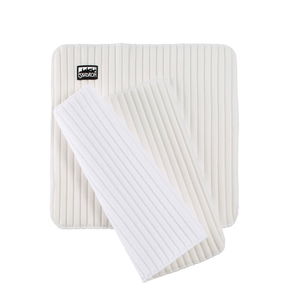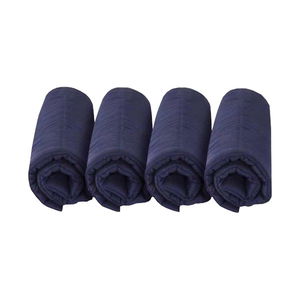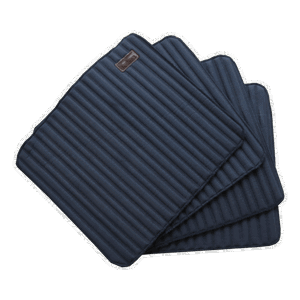Bandage Pads
(33)Frequently asked questions about Bandage Pads
To ensure that the horse is not restricted in movement, you should make sure that the bandage pads are the right size. It is important that they end just below the carpal or hock joint and do not cover the hoof at the bottom. If the bandage pads are too large, the horse may step on them and stumble. To determine the correct size of the pads, you should measure your four-legged friend's long bones. Since the hind legs of most horses are longer, you can buy longer bandage pads for the hind legs than for the front legs.
To protect your horse's legs even better during training, you can use a bandage pad under the bandages. The padding helps to keep the tendons and ligaments warm and increases the shock-absorbing effect. Conversely, the pads also have a cooling function and can transport sweat away. However, bandaging pads are not only used as protection during riding, but can also be used during transport or in case of injuries, as they optimally support the connective tissue and protect wounds from dirt.
Bandage pads are available in many different variants and materials. Most manufacturers use cotton, polyester or blended fabric, and as filling materials fleece, cotton wool, foam or microfiber. Bandage pads that are designed to support healing processes are often made of special anti-inflammatory materials. Which bandage pads are the right ones for your horse also depends on your personal preferences. For transport, however, you should use long bandage pads, as they protect the entire fetlock and are thickly padded.
When you put the bandage pad on the horse's leg, it is important to ensure that it does not form any wrinkles, as this can cause painful pressure points. The pads should fit snugly but not too tightly. Then you can wrap the bandage over it. Once you have finished bandaging, it is best to double-check that the bandage and bandage pad are firmly in place, so that nothing can slip.
Whether you need a bandage pad or not depends on which bandages you are using and for what purpose you are bandaging. For example, with the flex bandages, you should always use a bandage pad, as otherwise there is a risk that the bandage will be too tight on the horse's leg and the blood circulation will be impaired. A bandage pad is also useful during transport and in case of injuries, as the additional padding provides better protection. If you want to bandage your horse for training, bandage pads are not strictly necessary, but they have the advantage of distributing the pressure evenly around the horse's leg.













































































